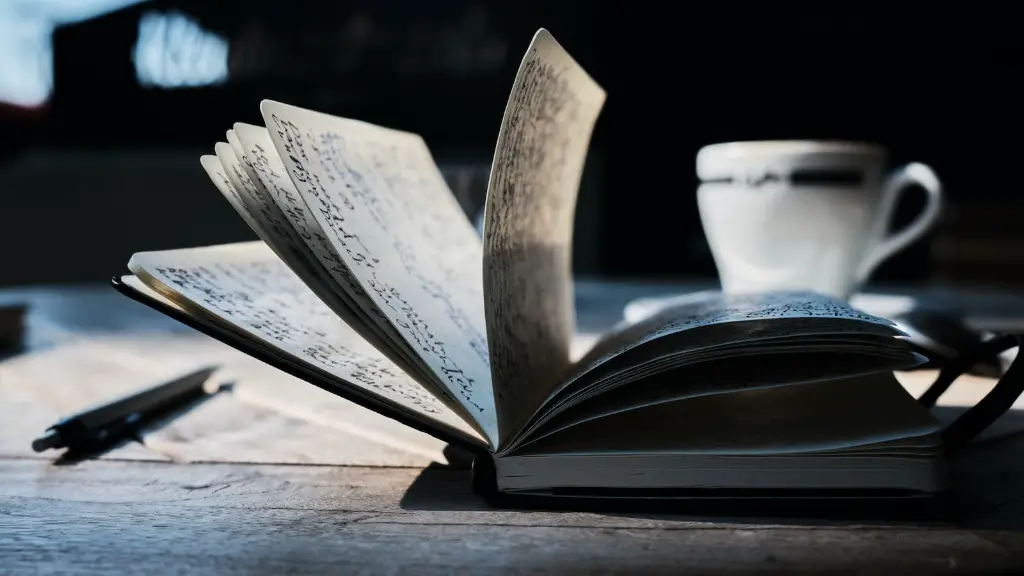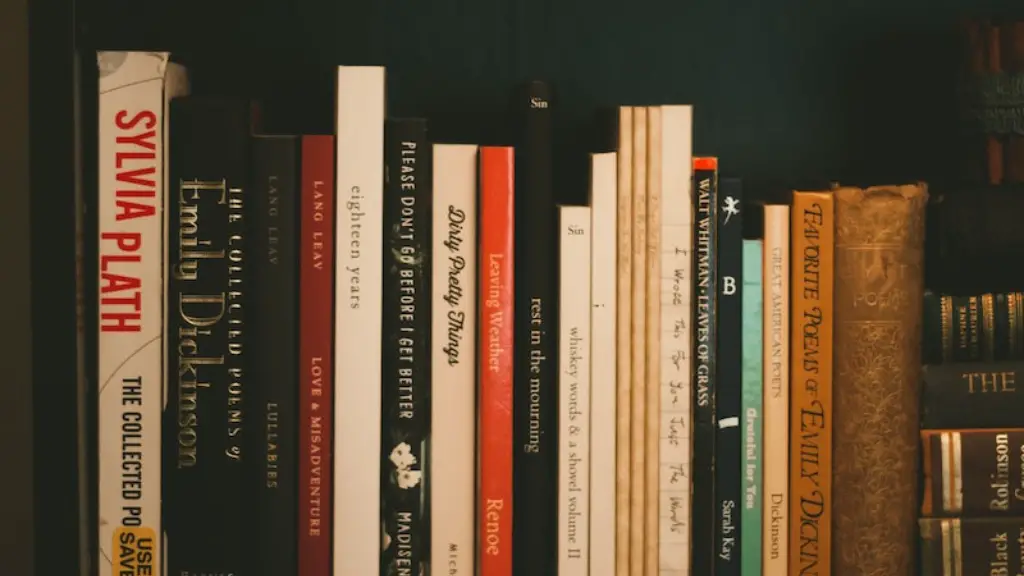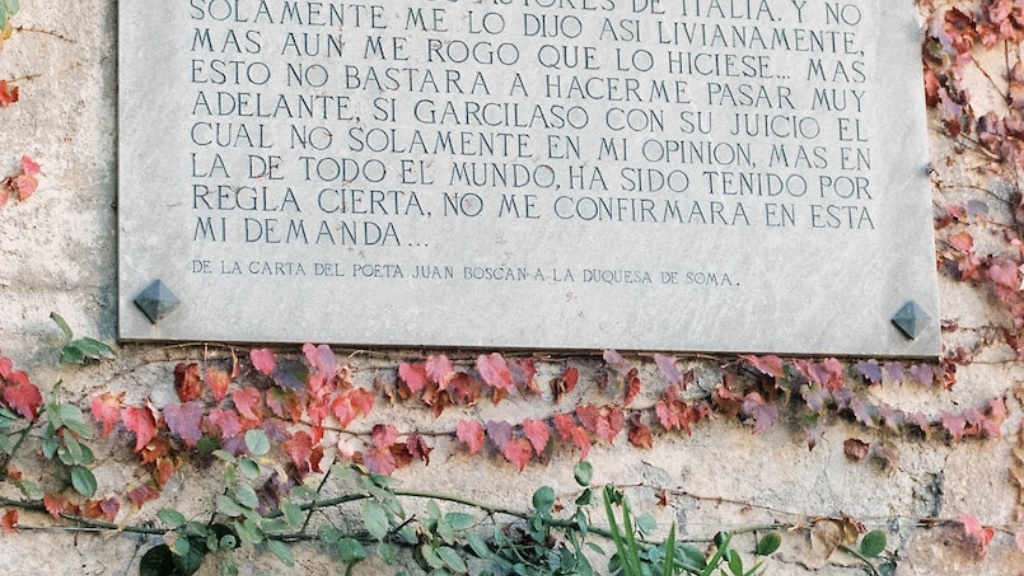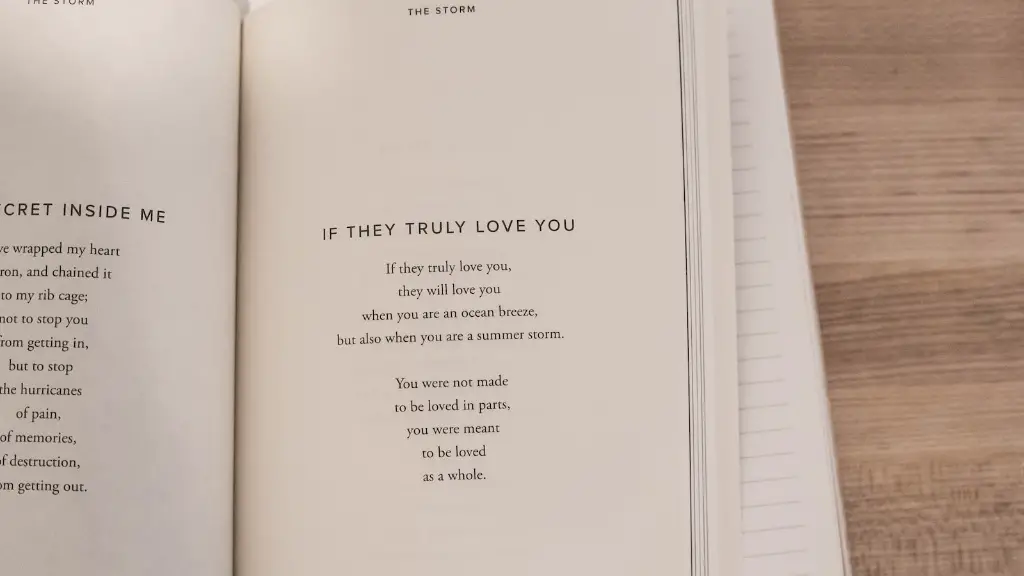Introduction
Poetry is an ancient and powerful art form that has been used throughout human history to communicate emotions, create vivid images, and tell stories. It often has a deeper meaning than other forms of literature and can be highly emotive. There are many different elements that are used in poetry and each has its own unique purpose. In this article, we will explore what the five elements of poetry are, why they are important, and how they work together to make a poem.
Rhyme
Rhymes are words that have similar sounds and are used at the end of lines in a poem. Rhyme creates a sense of harmony and structure, which makes the poem easier to read and memorize. For example, the traditional poem “Twinkle Twinkle Little Star” has a rhyming couplet at the end of each line. Rhyme can also be used to emphasize a certain idea or image, or to emphasize a point in a poem. Rhyme is often used to add an emotional element to a poem.
Rhythm
Rhythm is the beat or pattern in poetry. It is created by repeating certain words, sounds, or syllables throughout a poem. Rhythm can be regular and consistent, or it can be broken up, or something in between. It helps create a sense of harmony, movement, and purpose. Different types of rhythm can be used to create different effects in a poem. For example, a poem with slower rhythm can be calming or serious, while a poem with a faster rhythm can be exciting or humorous.
Imagery
Imagery is the use of words and phrases to create a mental image or sensation in the reader’s mind. It can be vivid and descriptive, or subtle and abstract. The poet uses imagery to evoke a feeling or emotion from the reader. By using imagery, the poet is able to paint a picture in the reader’s mind of the scene or situation being described in the poem.
Figurative Language
Figurative language is the use of words or phrases that are not meant to be taken literally. This includes metaphors, similes, personification, and many other types of comparisons. Figurative language helps to create a vivid image in the reader’s mind and can evoke strong emotions. By comparing things to one another, the poet can create a vivid image in the reader’s mind. This can also help to convey complex ideas in a simple fashion.
Structure
The structure of a poem is the way it is written and organized. It includes the use of rhyme, rhythm, imagery, figurative language, and other elements. The structure of a poem can help to give it a certain purpose or meaning. For example, a poem may have a particular structure to convey a specific feeling or to tell a story. Structure can also be used to create a sense of unity in a poem, making it easier to understand and remember.
Symbolism
Symbolism is the use of symbols to represent ideas, emotions, or objects. Symbolism can be used to give a poem hidden meanings, or to create a sense of mystery. Symbols can be abstract or have obvious meanings, and they can evoke strong emotions in the reader. By incorporating symbols into a poem, the poet can create a stark contrast between what is said and what is meant.
Analysis
The five elements of poetry—rhyme, rhythm, imagery, figurative language, and structure—are essential components of any poem. These elements help create a sense of unity, create vivid mental images, evoke strong emotions, and convey complex ideas in a simpler fashion. By understanding and applying these elements in their writing, poets can create powerful and emotive works of art.
Rhyme Schemes
A rhyme scheme is a pattern of rhymes that occur throughout a poem. This can be done by using end rhymes, where the last words of each line of a poem rhyme with one another, or internal rhymes, where words within the lines rhyme with each other. Rhyme schemes create a sense of structure in a poem and can add to the rhythm of the piece. They can also help to give the poem a specific tone or emotion.
Word Choice
Word choice is the way in which a poet chooses to express an idea. It includes the use of metaphors, similes, and other types of figurative language. Word choice can help to convey a poet’s feelings, create vivid images, and evoke powerful emotions in the reader. By using carefully chosen words in a poem, a poet can create an emotional response from the reader.
Metaphors
A metaphor is the comparison of two unlike things without the use of a connecting word. Metaphors are used to create vivid imagery in the reader’s mind and to express complex ideas in a simpler fashion. Metaphors can also be used to evoke powerful emotions and to convey the poet’s feelings and ideas. By understanding and applying metaphors in their writing, poets can create powerful and emotive works of art.
Personification
Personification is the act of attributing human characteristics to an object or a concept. It is used to give an object or concept feelings, emotions, and human qualities. By using personification in a poem, the poet can create a vivid image or evoke powerful emotions in the reader. Personification is often used to create a deeper meaning or to emphasize a particular point in the poem.
Conclusion
Poetry is an ancient and powerful art form that has been used throughout human history. It often has a deeper meaning than other forms of literature and can be highly emotive. The five elements of poetry—rhyme, rhythm, imagery, figurative language, and structure—are essential components of any poem. By understanding and applying these elements in their writing, poets can create powerful and emotive works of art.



